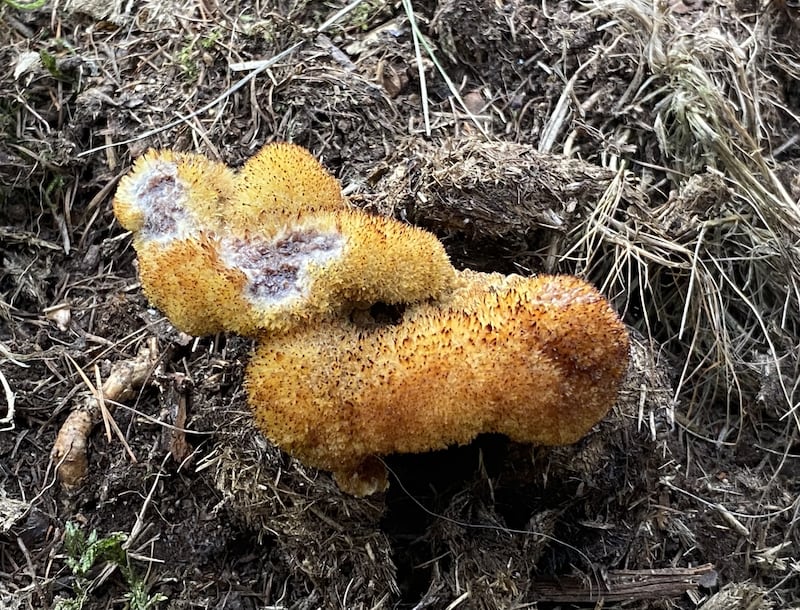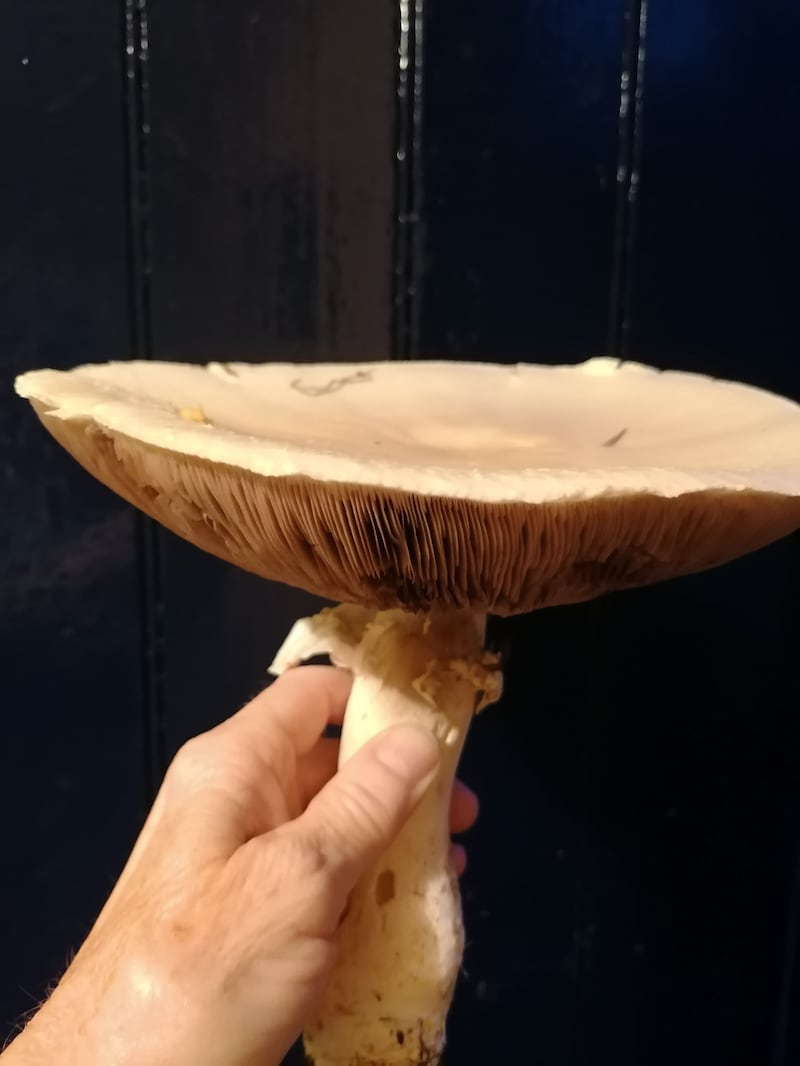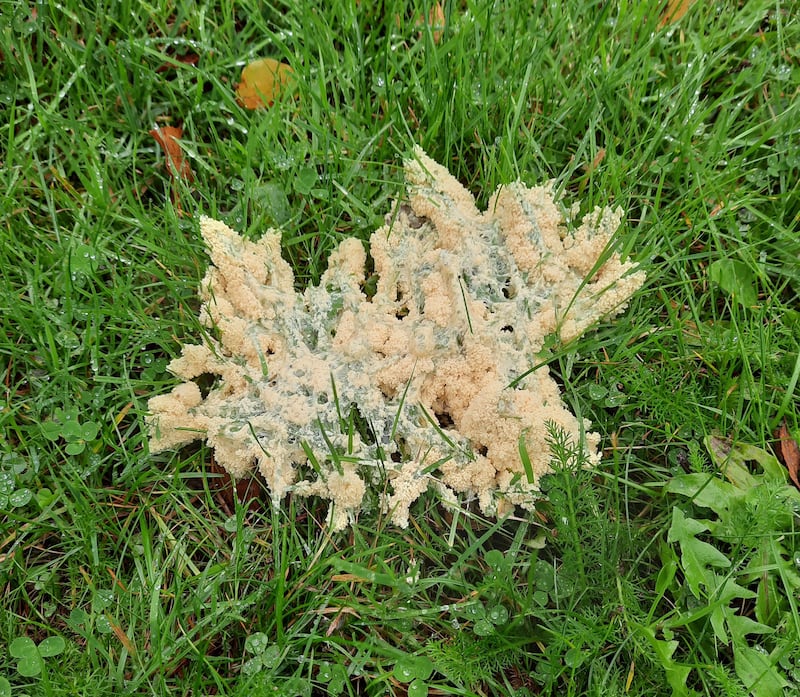This bird has been in my garden a lot lately. I was able to get this photo of him/her. – Niall Mac Neill, Co Dublin
And a very fine picture it is too of a male sparrowhawk. These birds are the most commonly seen bird of prey in urban gardens. They feed entirely on smaller birds.

I saw this unusual mushroom growing from a pine root in the local woods. Is it Dyers Mazegill, which was used to make red dye in the past, and is it common? – Yanny Petters, Co Wicklow
The mycologist Kieran Connolly confirms that it is indeed a young stage of Phaeolus schweinitzii, the Dyers Mazegill fungus. It looks quite different when mature so take another picture of it to further our education. And, yes, it was used for dyes in the old days.
RM Block

I found this huge mushroom. It’s 9 inches across and looks like the regular field mushroom but I didn’t want to chance eating it due to its unusual size. Was I wise? –Anne Ryan, Co Wexford
Very wise – I am glad you are taking this column’s advice and never eating a fungus you are not absolutely sure is safe. It could well be Agaricus macrosporus, but microscopic examination of the spores would be necessary to be absolutely sure.

Is this dog sick slime mould? It has appeared in patches on successive nights in my back garden lately. I originally blamed our unfortunate cat until I inspected it closer. Why has it suddenly appeared and is it dangerous to animals? – Noirin Kelleher, Co Dublin
Tis the season. Yes this is dog’s vomit slime mould, a Mycomycete, that grows on dead leaves and other decaying plant material. It suddenly appears around now after a spell of heavy rain and it feeds on bacteria and fungi. It can move around a bit, slithering in an amoeba-like fashion, but it is not harmful to pets or wildlife.
I have been told that ivy doesn’t grow on beech trees. I took this picture of an ivy-clad beech tree in Moore’s Wood near Monasterevin. – Terry Moseley
Which just goes to show that there are always exceptions.
Have you a nature query, observation, or photo you would like to send to The Irish Times? Please submit it, with a location, via our website www.irishtimes.com/eyeonnature

















